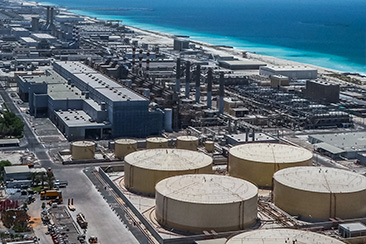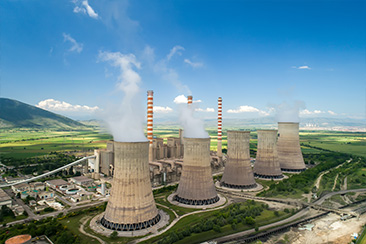
Offshore

Platform
The offshore platform is a large structure with facilities for well drilling to explore, extract, store, and process petroleum and natural gas that lies in rock formations beneath the seabed. Many oil platforms will also contain facilities to accommodate their workforce.

FPSO (Floating Production Storage & Offloading)
The FPSO unit is a floating vessel used by the offshore oil and gas industry for the production and processing of hydrocarbons, and for the storage of oil. An FPSO vessel is designed to receive hydrocarbons produced by itself or from nearby platforms or subsea template, process them and store oil until it can be offloaded onto a tanker or, less frequently, transported through a pipeline.

FLNG (Floating Liquefied Natural Gas)
The FLNG facility is a floating production storage and offloading unit that conducts liquefied natural gas (LNG) operations for developing offshore natural gas resources. Floating above an offshore natural gas field, the FLNG facility produces, liquefies, stores and transfers LNG (and potentially LPG and condensate) at sea before carriers ship it directly to markets.

Subsea
Subsea is fully submerged ocean equipment, operations or applications, especially when some distance offshore, in deep ocean waters, or on the seabed. The term is frequently used in connection with oceanography, marine or ocean engineering, ocean exploration, remotely operated vehicle (ROVs) autonomous underwater vehicles (AUVs), submarine communications or power cables, seafloor mineral mining, oil and gas, and offshore wind power.
Onshore

Exploration & Production
Exploration and production “onshore” refers to the development of oil fields, gas deposits and geothermal energy on land. The onshore extraction of crude oil or gas requires drilling into underground deposits. In conventional extraction, one differentiates between primary, secondary and tertiary extraction depending on the degree of difficulty.

Transportation
Pipeline transportation is a method of transportation which involves movement of solid, liquid or gaseous products over long distances through pipelines. This mode of transportation is mostly used for transport of crude and refined petroleum products such as oil and natural gas. However pipelines are also useful for transporting other fluids such as water, slurry, sewage etc.

Treatment
The purpose of oil and gas processing is to separate, remove, or transform these various components to make the hydrocarbons ready for sale.

Storage
Storage of oil and natural gas helps smooth out supply and demand discrepancies. Companies store more when the prices are lower than they would like, and withdraw when prices are high. Above ground tanks are used for crude and refined oil, finished oil products, and natural gas. At retail locations, like gas stations, tanks are stored underground for safety reasons.

LNG Plant (Liquefied Natural Gas Plant)
The LNG plant makes out the LNG production where completely or partially untreated, raw natural gas in a gaseous state comes in, and refined LNG is shipped out. In general, two main processes take place at the plants: the gas treatment process and the liquefaction process.

Refining & Petrolchemical
Through refining and petrochemical activities, crude oil and natural gas are transformed into finished goods and chemical intermediates used for everyday needs (fuels, plastics, resins, etc.).

Storage / Pipeline / Desalination
Water desalination processes separate dissolved salts and other minerals from water. Saltwater (especially sea water) is desalinated to produce water suitable for human consumption or irrigation. The by-product of the desalination process is brine. Desalination is used on many seagoing ships and submarines.

Power Generation
Electricity generation is the process of generating electric power from sources of primary energy. For utilities in the electric power industry, it is the stage prior to its delivery (transmission, distribution, etc.) to end users or its storage (using, for example, the pumped-storage method).

